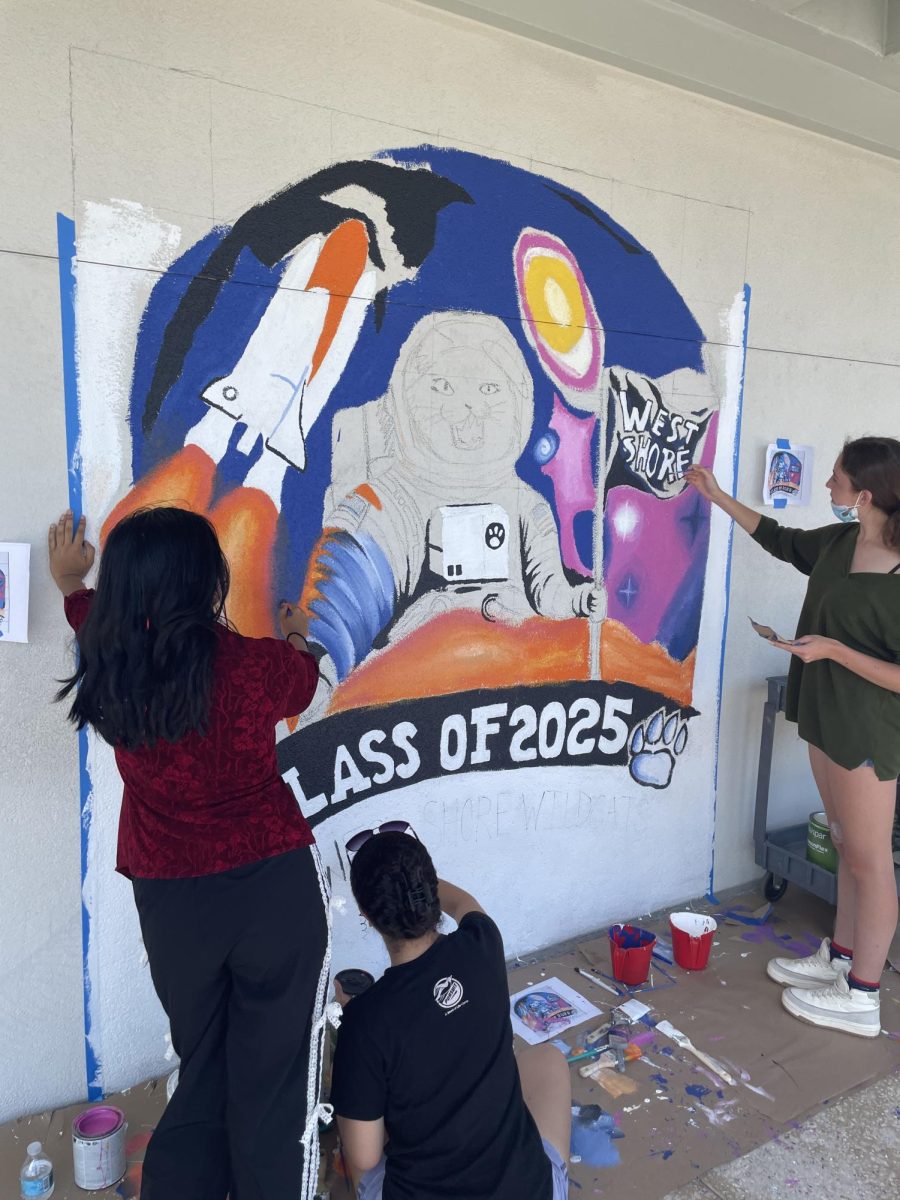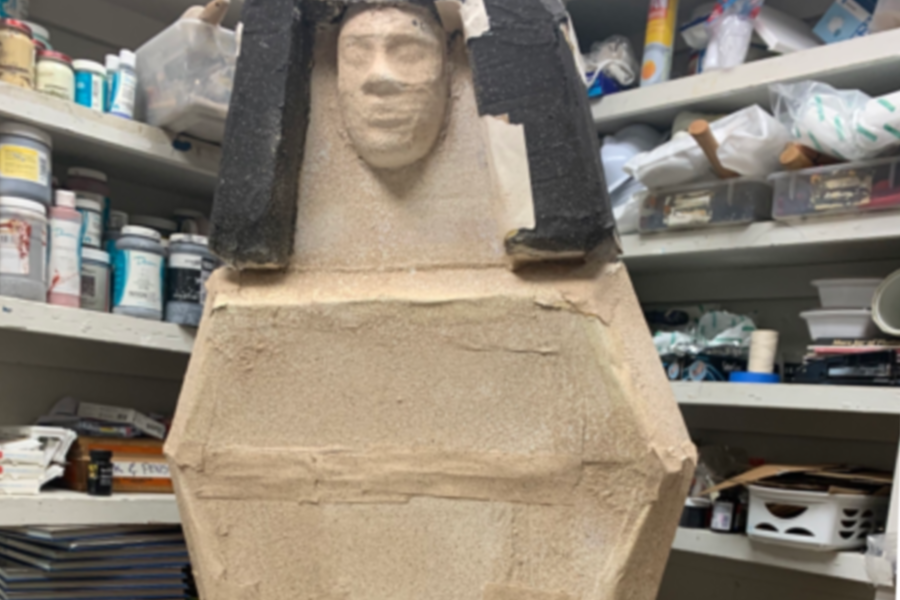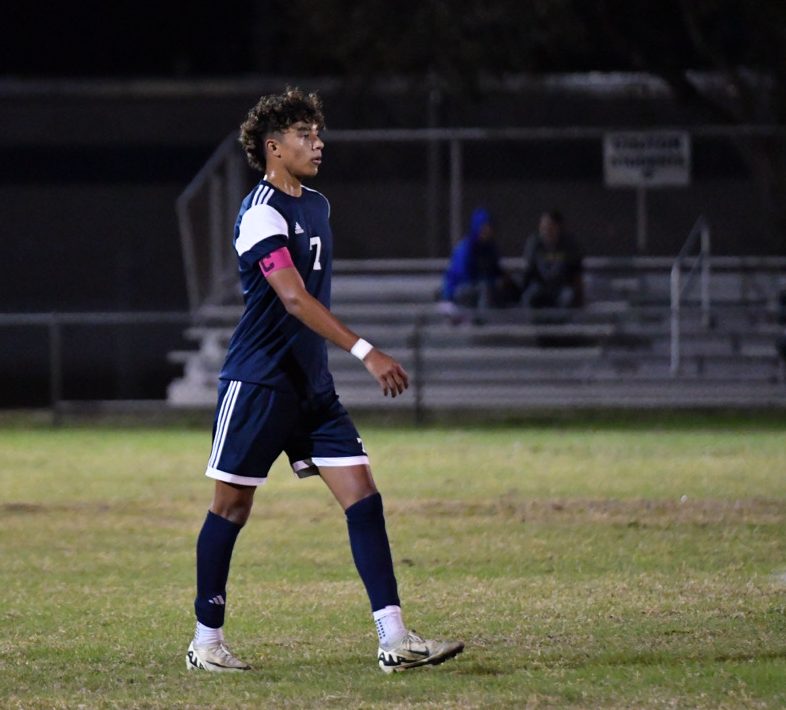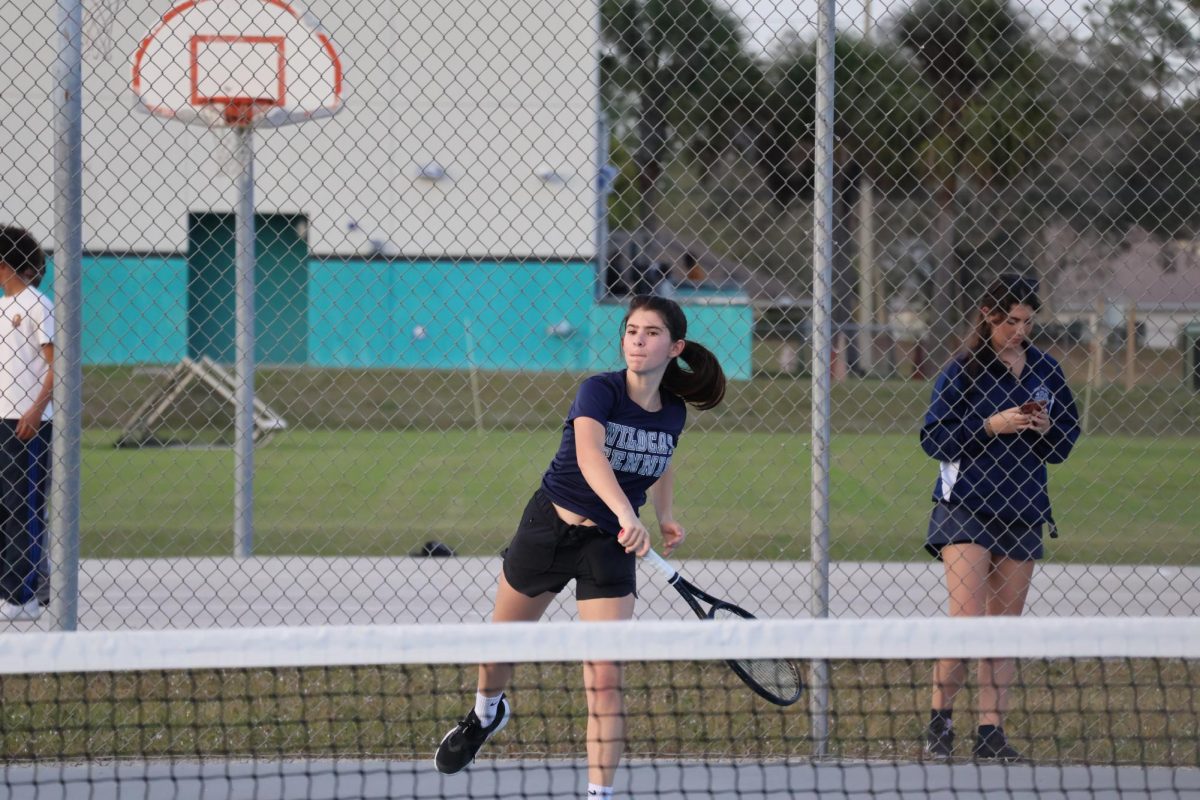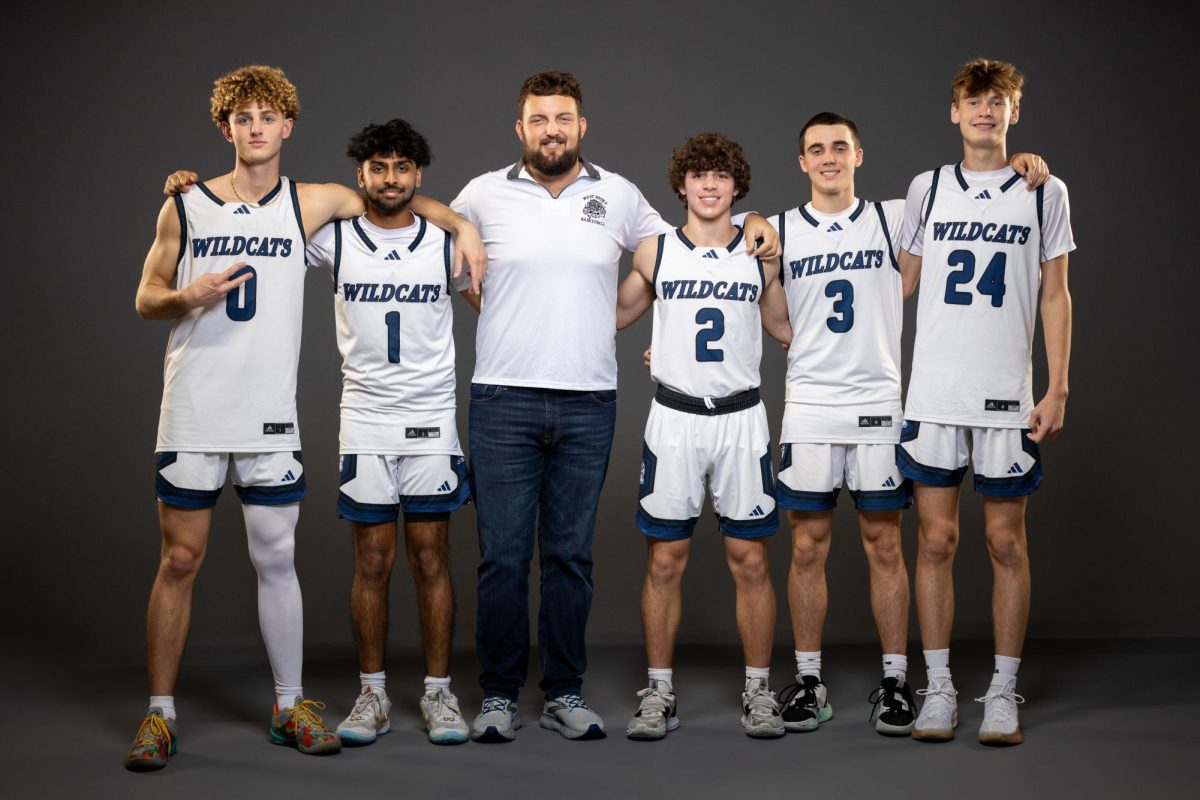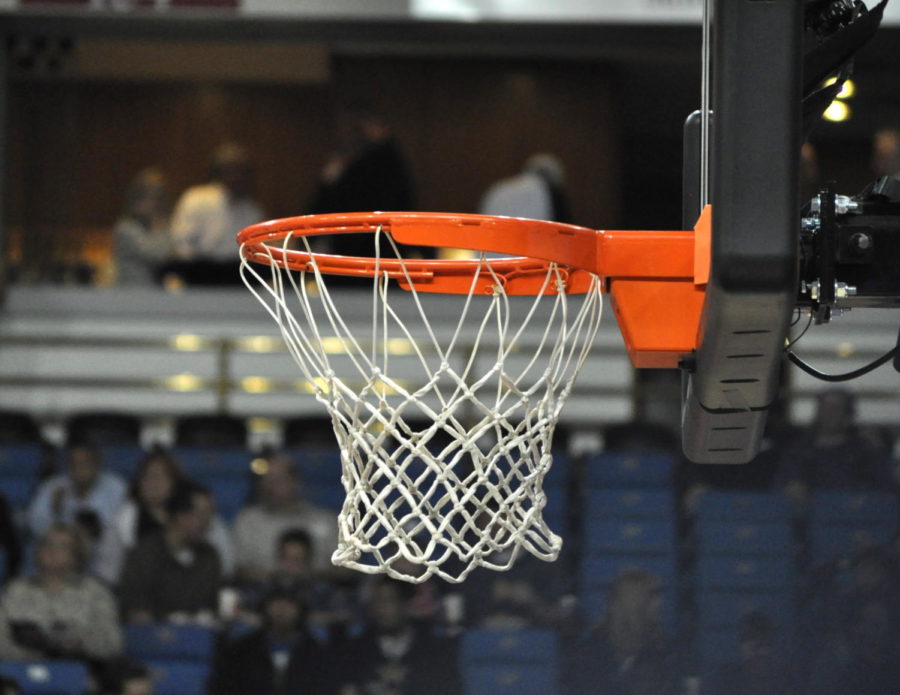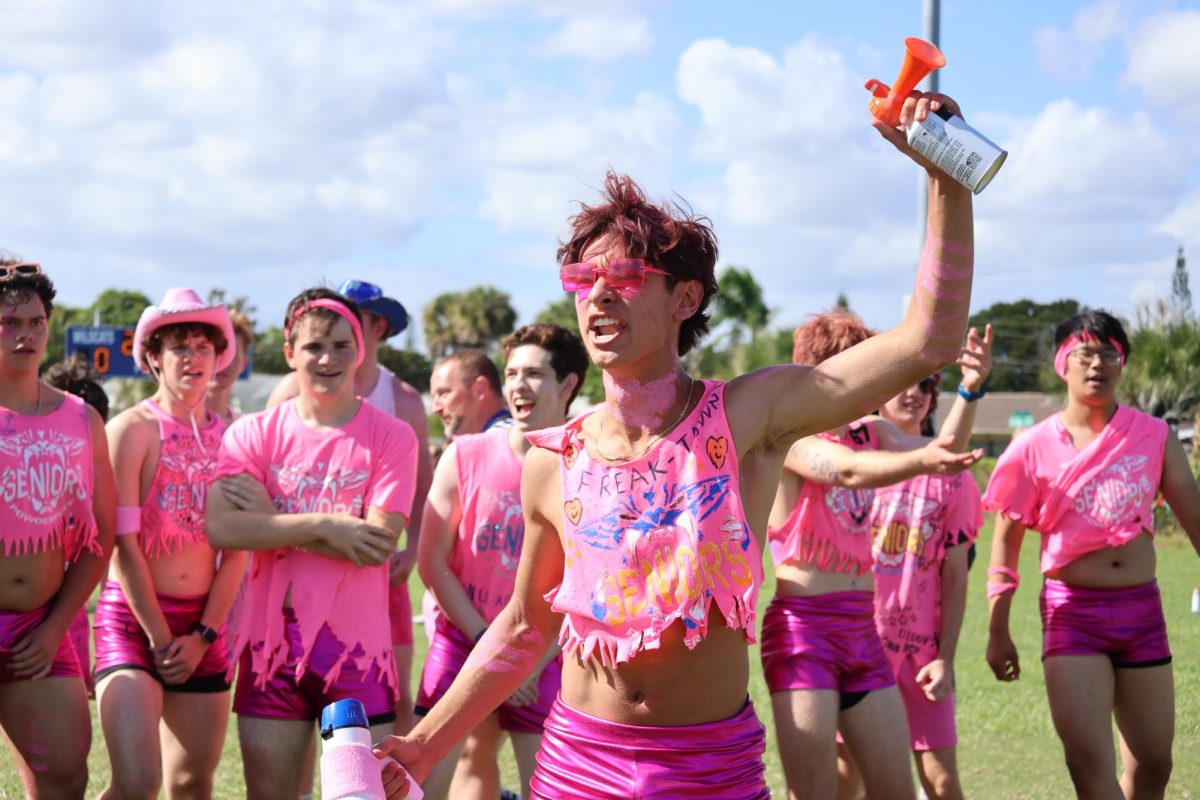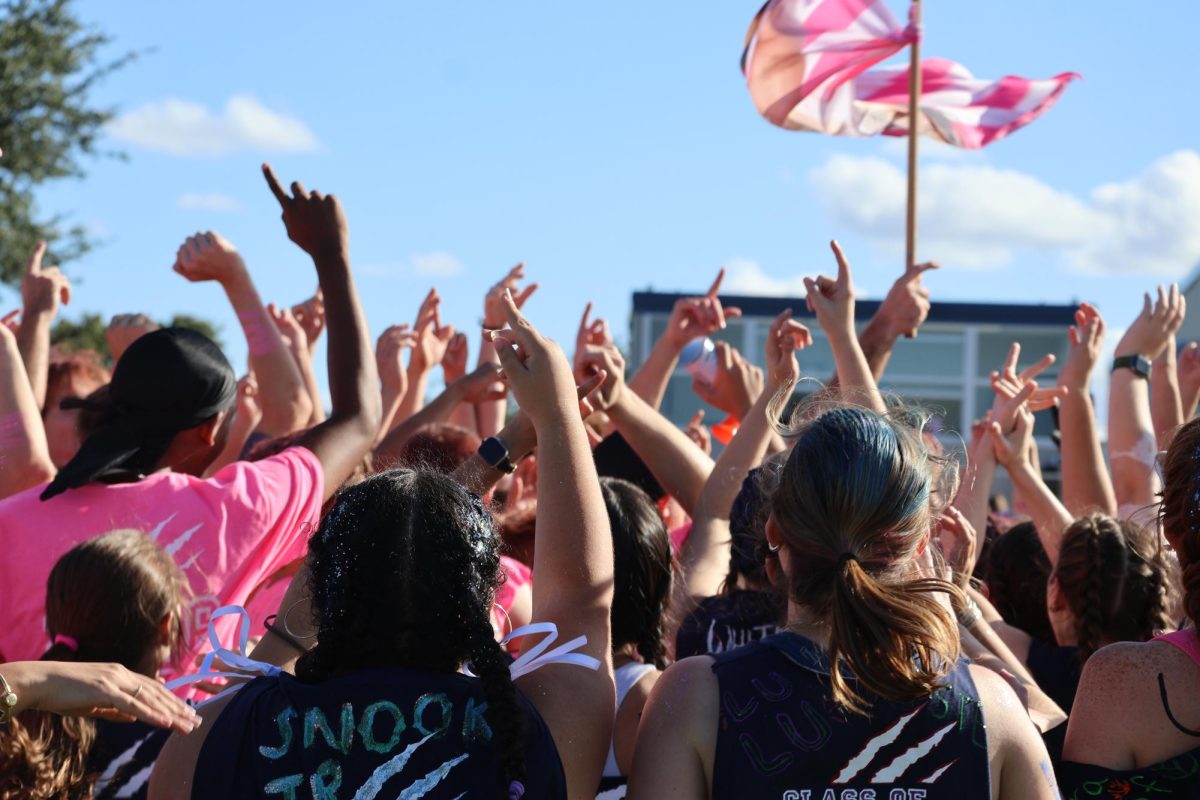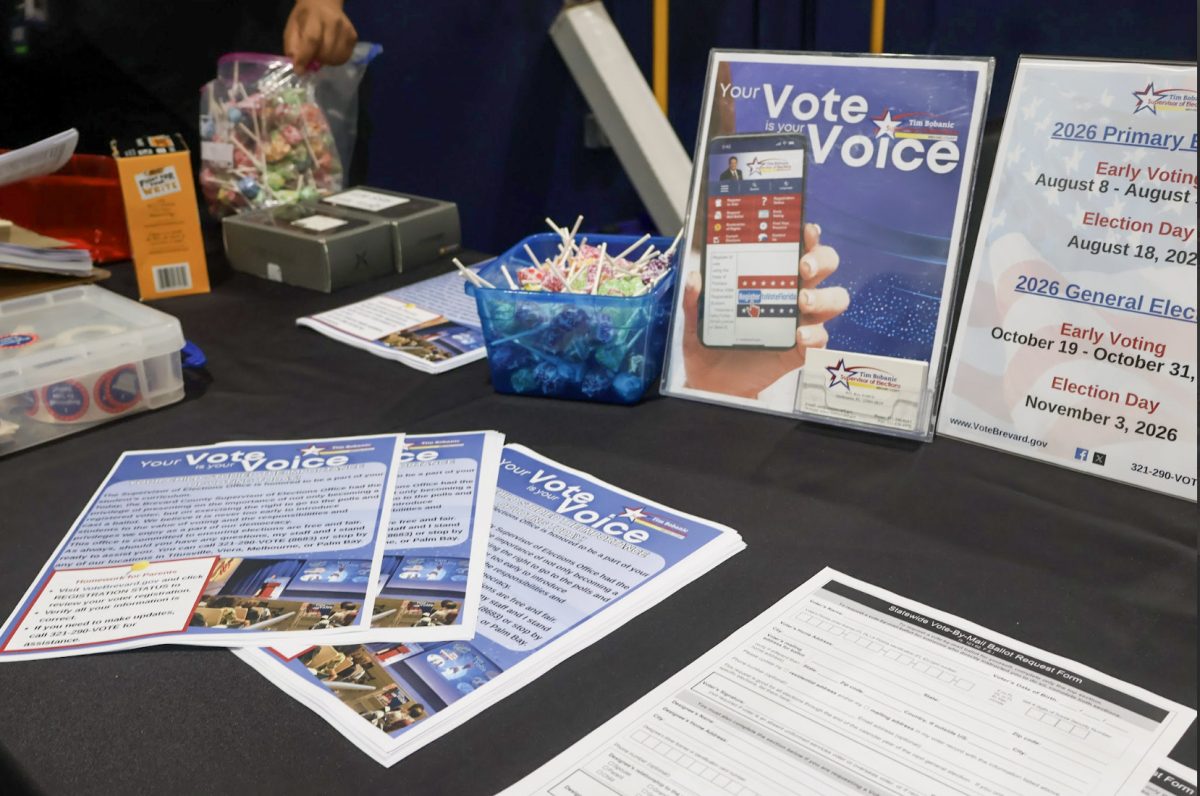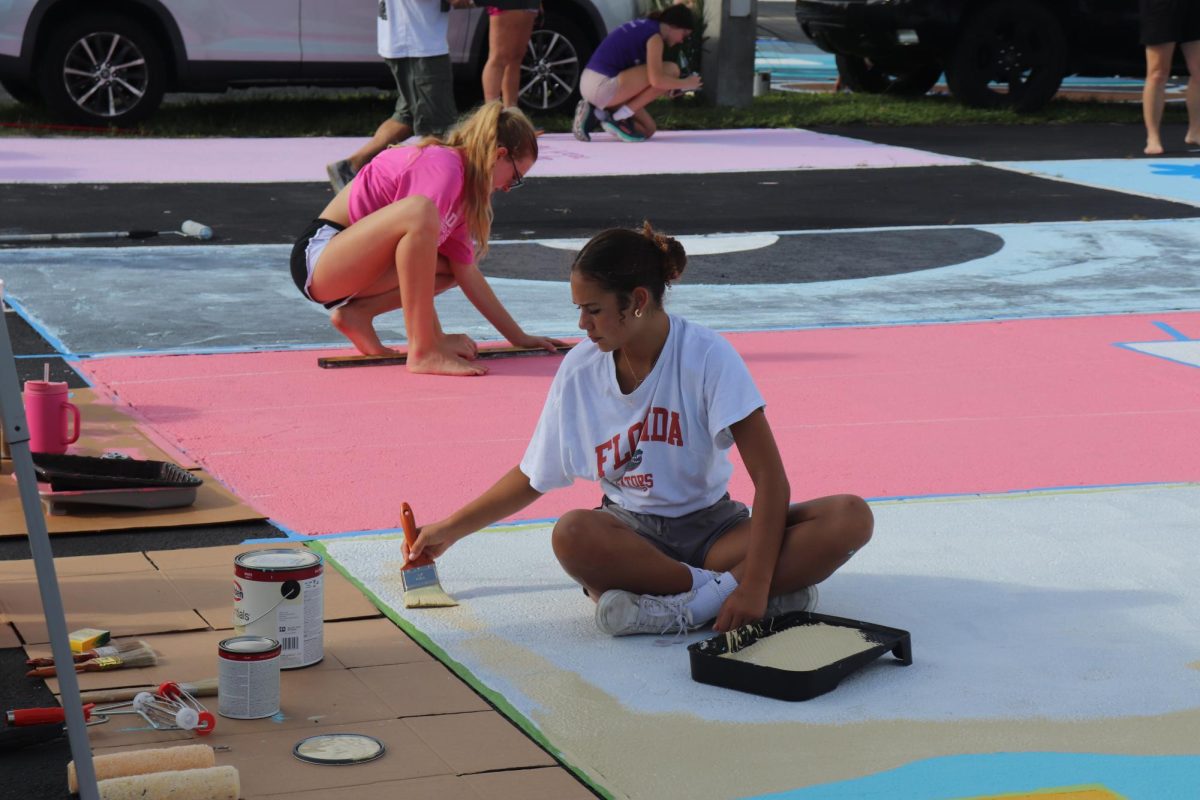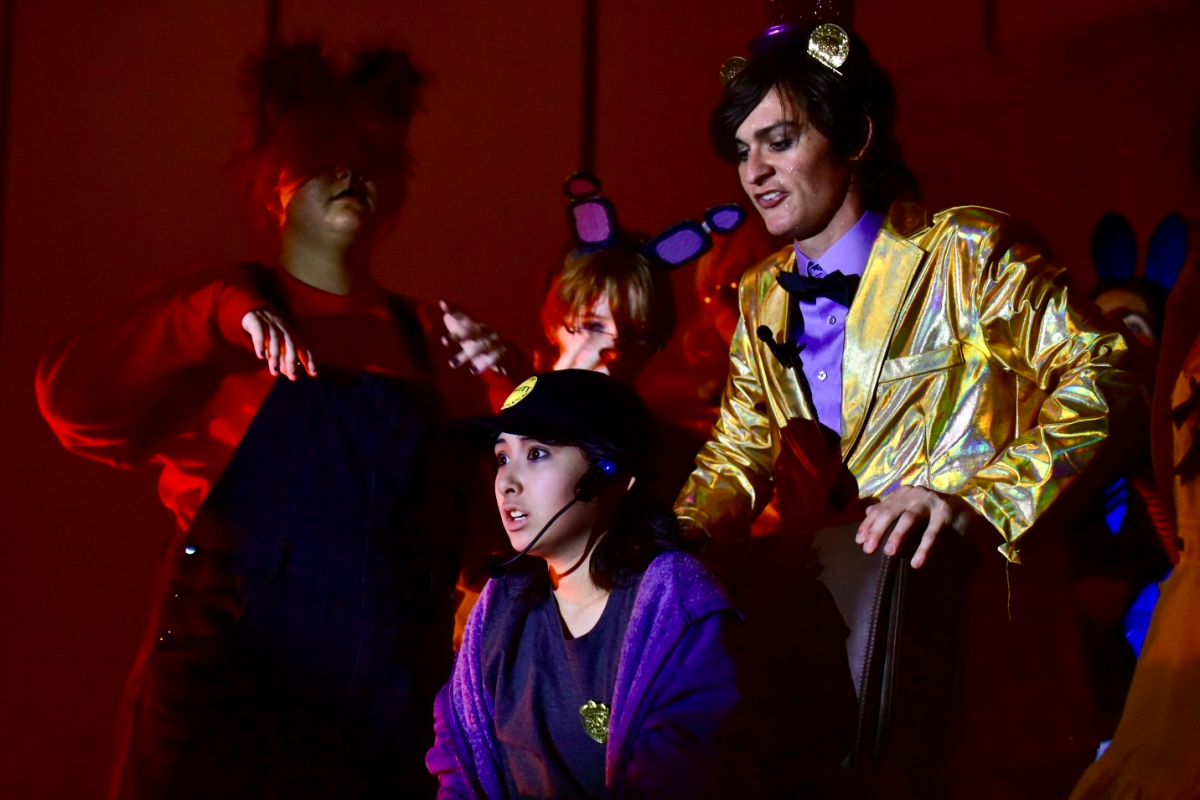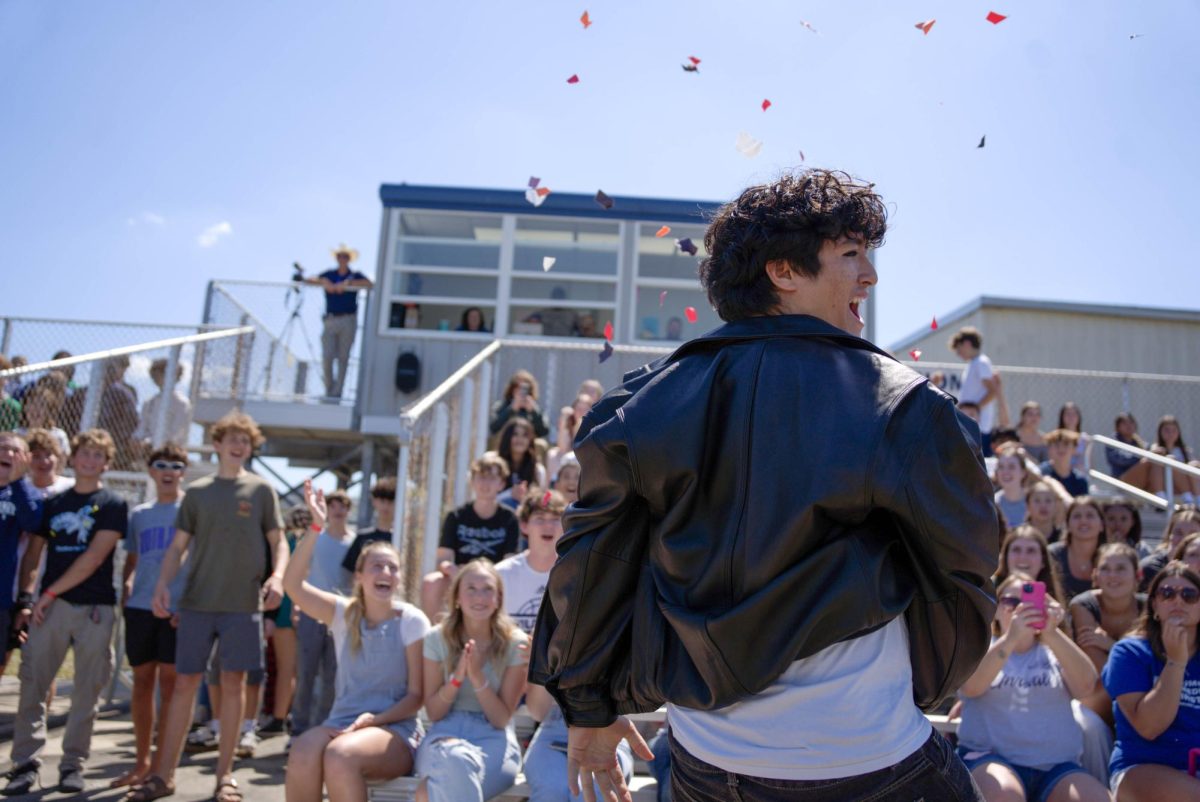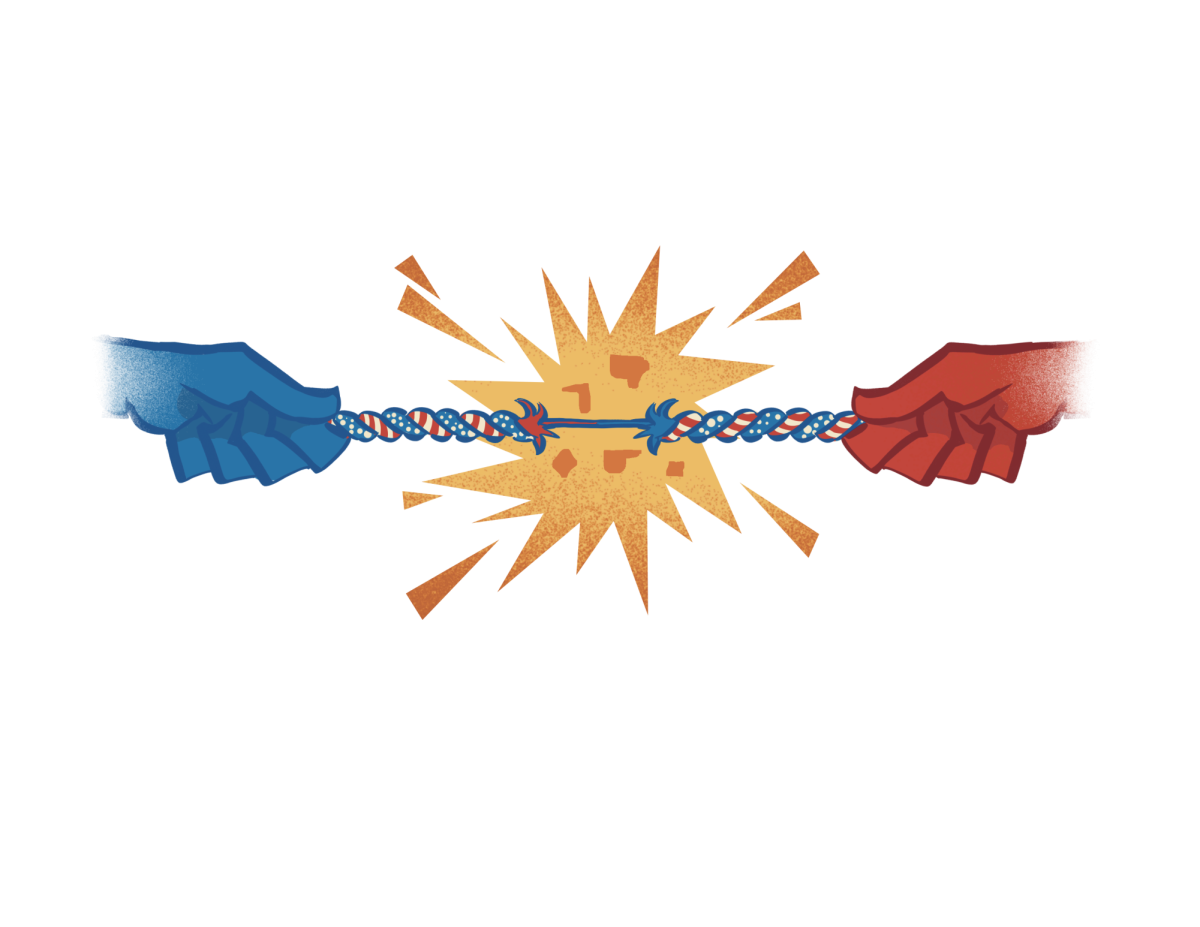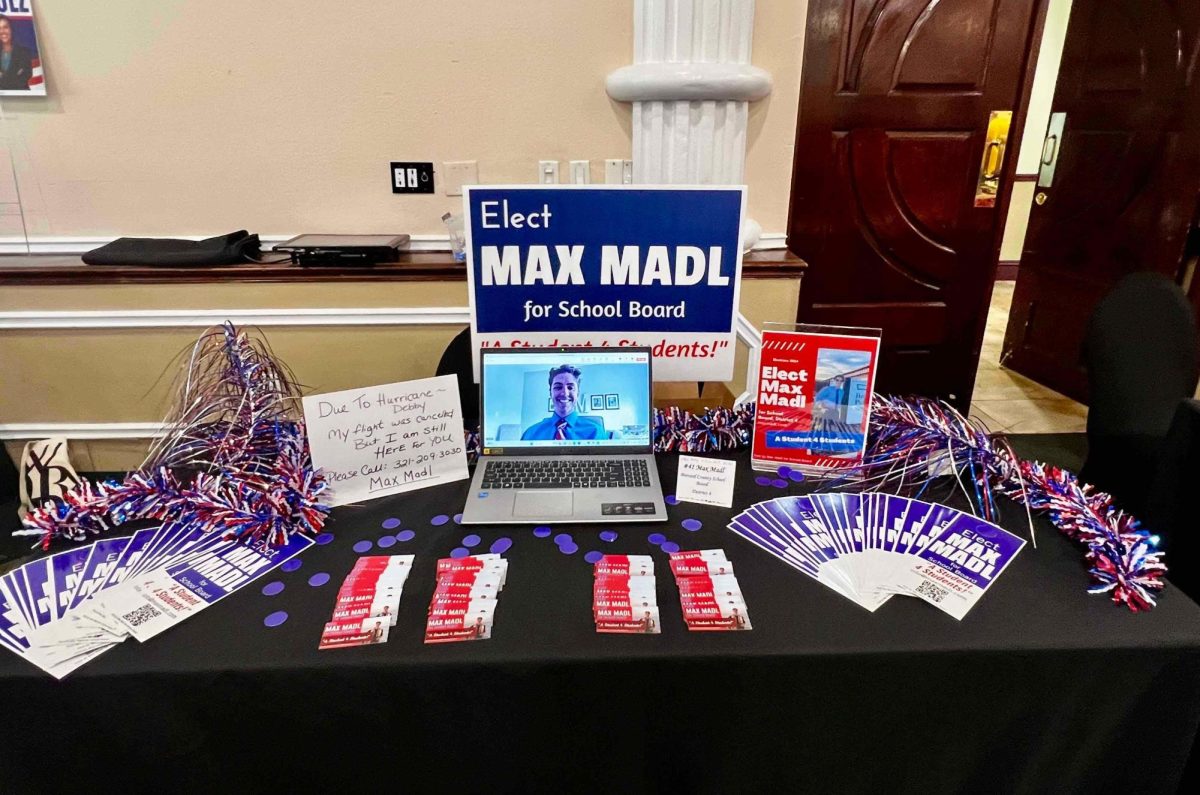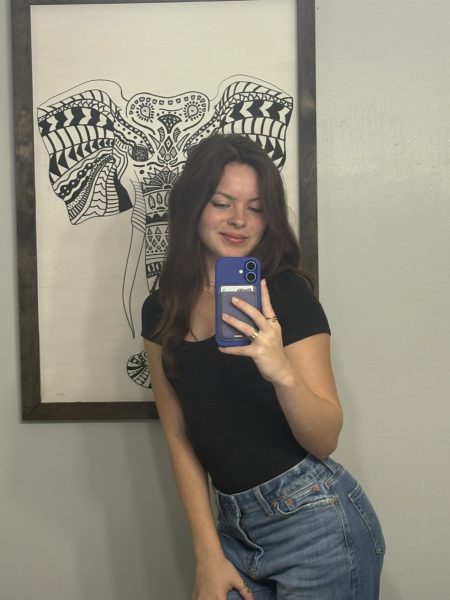The deep blue door of room 9-100B lurks in a secluded walkway next to the cafeteria, hidden in plain sight. However, eagle-eyed students will notice that the formerly dark doorway has been brightened by a pastel-colored poster advertising a new presence on campus. The room now belongs to social worker Samantha Doomé, who said she has one motivation: wanting to make a difference.
“The whole reason I wanted to go into social work was because of my niece, who lost her mom — my sister — [when] she was about five,” Doomé said. “She didn’t have a lot of support at the school, and seeing the scene where she went through, I just kept thinking ‘OK, I want to change lives.’ I want to be able to be that person that could help her grow and learn how to deal with grief. I thought, ‘OK, I don’t know how to help my niece right now, so what can I do to learn how to support her and how to support others her age?’ So she just kind of opened that book to social work for me.”
Doomé splits her time between three different schools, working with students ranging from kindergarteners to seniors. Having worked as an in-school social worker for three years, she said she enjoys being able to work with such a variety of ages.
“[West Shore is] my only high school,” Doomé said. “It’s different, and I really like being at high school. In elementary school, problems are mostly ‘he said, she said’ or ‘they looked at me the wrong way’ or something like that. And then with high school … it’s actually difficult dealing with high school because you really have to form that rapport and connection with them. With little kids, you just have to look at them and they’ll run and give you a hug, but in high school, you really have to develop that relationship with them.”

Doomé’s presence on campus is part of a larger Brevard Public Schools initiative to improve and support students’ mental health. According to the Brevard Public Schools description of school social worker services, they “function as a liaison between the school, family and community, [as well as] provide intervention and skill building, crisis intervention and consultation in addressing the barriers to student achievement.”
Guidance department head Kimberly Strauch said she thinks Doomé’s presence will be extremely beneficial for the West Shore student population.
“I’m happy that the district saw the need that every school needed to have someone like Ms. Doomé on campus,” Strauch said. “Our students are struggling with a lot of either mental health issues or emotional struggles from situations at home, and a social worker is able to just basically have more of a background and schooling in those specific things. So she plays a pivotal role because she’s helping us serve the students in a more focused way, while we just were more of the broad kind of help and she can pinpoint what they need and serve them better.”
In previous years, when students struggled with mental health issues or crises, they were directed to the guidance department for aid. This was in addition to the counselors’ day-to-day duties of handling schedules, offering career advice and more. Doomé said that she was brought in to help alleviate some of that work, while simultaneously being a more focused mental health resource for all students.
“For the longest time, schools and education and even the world were kind of turning their heads and acting like mental health doesn’t exist,” Doomé said. “But turn their heads all they want, it’s still going to exist. We used to have just guidance counselors in schools, but technically, guidance counselors’ jobs aren’t to deal with mental health. It’s to help you guys with schedules, and get [student’s] lives prepared for careers, but these counselors were having all the students’ mental health problems put on them and weren’t able to reach as many students as they wanted to. Having the social workers come into schools and actually get time to meet with students and have that intervention time, it actually gives students the ability to open up and really have that support person, because not everyone has that ability to get counseling outside school. It’s very expensive and not everyone has good insurance. So having that free support system in school, I think really has saved a lot of students.”
Strauch said that she hopes having Doomé as a resource will help to alleviate stigma around mental health, which has been characterized by the National Library of Medicine as a culturally prevalent notion that prevents many who struggle with mental health problems from obtaining the help they need.
“I’m hoping that students can see mental health as a more positive thing,” Strauch said. “We talk about physical health and everyone sees that as, oh, I’m going to get out and I’m going to do my exercise today. I’m going to go for a run. I’m going to do this. And so to see mental health as not not going to someone because there’s something wrong but going to someone to build yourself, I think will be really helpful. I think if we can see strong mental health similarly to stronger physical health and kind of getting away from that stigma that it’s not something we should talk about, that’ll be great. I think it’s great that we have [Doomé] and that she’s out in the open and we’re, I don’t want to say advertising that we have a social worker, but it’s not something secretive. It’s something like, hey, we’ve got this. If you need her, we’re here. And to not make it something that people should feel secretive about and something that they can just be open with because we want to build their mental health.”
“According to the Center for Disease Control and Prevention, 40% of students struggled with feelings of depression in 2023, with an average of 20% of students considering suicide and just under 10% attempting it. With this in mind, numerous states — Florida included — have statewide policies regarding the availability of mental health resources in schools.
“I think [having Doomé on campus] will drastically help not just necessarily students being referred to her, but just students knowing that there is a social worker on campus,” Strauch said. “So they know that this is the person that they can go to. You know, obviously they see the three of us counselors for academics for the most part, but we have students in here for emotional needs as well. Just having that extra support and just students knowing that there’s someone dedicated to them and improving their own mental health for that more of that long term, especially in just being able to do it on campus, not having to go outside and missing school to see a therapist or anything like that. She’s a free service that we have. I think it will drastically improve our students’ ability to have stronger mental health.”
Doomé said that building connections is important to her, and that she truly wants to be a resource that everyone can feel comfortable with. She also said that she knows it may take time to do so, but that it is time she is more than willing to give, drawing inspiration from her own experiences in grade school.
Probably until the tenth grade, I just wouldn’t talk to teachers,” Doomé said. “Obviously I want to impact all children. But if I could impact those that are too shy or too scared to ask for help, that would really, really mean a lot to me. That’s why I created that QR code for meetings because I know I would never approach an adult and say I need help. I just wouldn’t. So I want to be able to hit all of the student body and make them feel comfortable that they can approach me.
Doomé said that though building relationships may be difficult at times, she hopes that they will make an impact on any student who comes into her office.
“I’ve always had a huge soft spot for children,” Doomé said. “I like to work with children because you guys have such a genuine heart and I feel like the world hasn’t really touched you guys yet. So I would like to be that influence. I want to be the influence that helps you find who you are. I feel like if I could just be that person that influences you guys, even a little bit to be a good person, that solves pretty much my life purpose in being a social worker. It really does.”

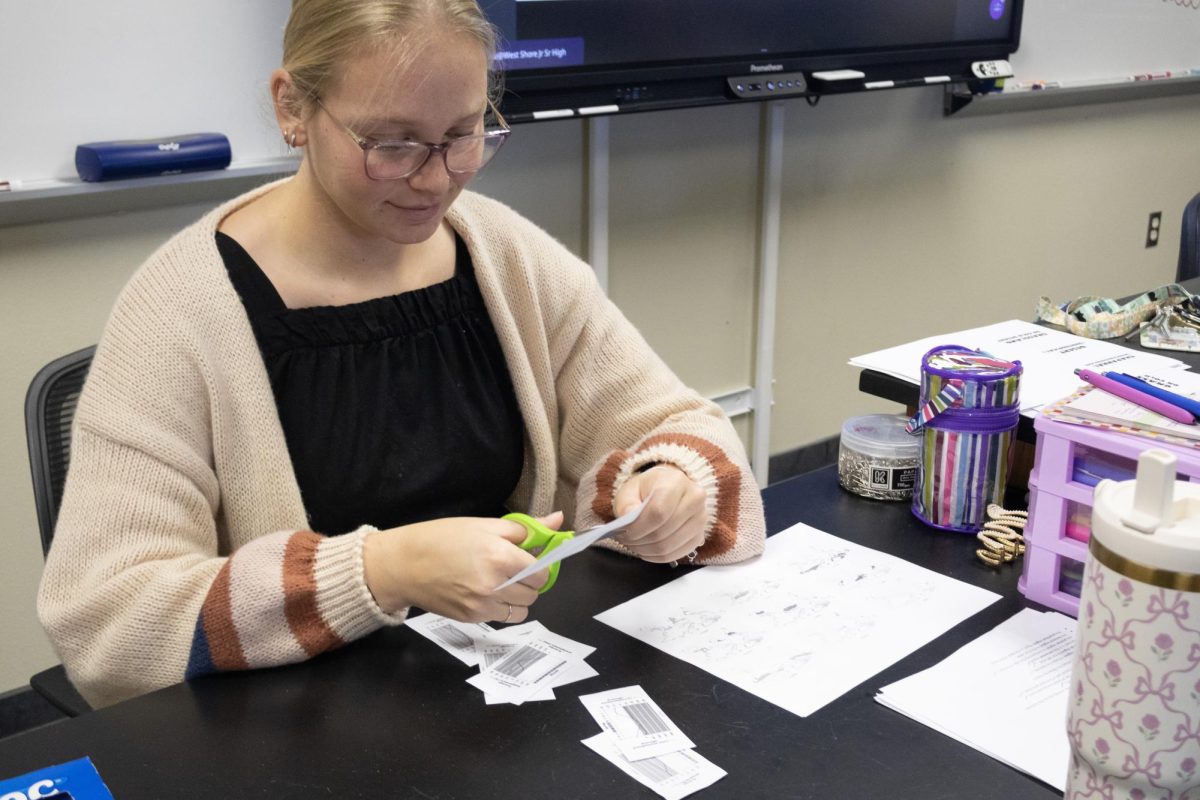
![Sophomore Isabelle Gaudry walks through the metal detector, monitored by School Resource Officer Valerie Butler, on Aug. 13. “I think [the students have] been adjusting really well," Butler said. "We've had no issues, no snafus. Everything's been running smoothly, and we've been getting kids to class on time.”](https://westshoreroar.com/wp-content/uploads/2025/08/IMG_9979-1200x800.jpg)
